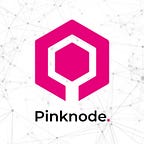Introduction
With Polkadot’s recent achievements, successful Kusama parachain auctions, explosive growth in development activity, and pending highly anticipated Polkadot parachain auction, more developers will be looking for dependable infrastructure solutions to begin building on Polkadot. Amongst infrastructure components, nodes are at the core of it, performing critical functions of the network, such as validating transactions, storing records of the blockchain, or submitting votes on network governance.
Here at Pinknode, we refer to this as the superhighway network of blockchain infrastructure.
Public API Endpoints
The most common way for decentralized application (dApp) developers to access a node(transact and query data) on the Polkadot blockchain is through the use of Polkadot’s public API endpoints. Since its inception, Polkadot has provided public endpoints to aid testing and development. These API endpoints are free and readily available on Polkadot’s technical documentation. However, this dependency may change soon, when Polkadot’s parachains go live, and more dApps immigrate onto its protocol which could lead to a congested network and negatively impact the efficiency of Polkadot’s public API endpoints.
Run your own nodes
Alternatively, some projects and developers may opt to run and maintain their own nodes to achieve greater scalability and reliability. A peer-to-peer network connection is crucial for dApps, which can have lengthy initialization times which can take days to synchronize a node with Polkadot’s blockchain, sometimes causing the node to exceed the bandwidth and storage assigned to it. Additionally, storing the full Polkadot blockchain on an archive node can come with prohibitive costs, which will only increase with each new node you add. With the expansion and increasing complexity of infrastructure, teams may require specialized developer operations (DevOps) and site reliability engineers to handle its full-time maintenance.
Other issues
Even with the setup mentioned above, there is a multitude of concerns such as server location which affects response time, and provisioning of costly redundancies across multiple layers to handle spikes in the usage of the dApp.
When we take all of these weighty issues into consideration, it is evident why a whopping 130,000 developers are registered users of the largest third-party infrastructure provider on Ethereum.
What Makes Pinknode Different?
This is where Pinknode comes in with an easy, affordable yet superior alternative to running a personal node. As a subscription-based infrastructure service provider, Pinknode focuses on maintaining high availability through efficient redundancy planning and adopts a microservice architecture for quick continuous improvements and deployment.
Pinknode has nodes deployed around globally, enhanced by load balancing, and auto-scaling features built into its solution, allowing developers to instantly generate reliable and scalable custom API endpoints while providing developers with a personalized dashboard to track node usage analytics.
The burden of infrastructure maintenance is carried by Pinknode and the cost is shared amongst its users. When $PNODE tokens are purchased and staked for access to the API endpoints, they will only be burnt when their requests are made. This makes it a more flexible payment system than a monthly subscription-based service, where the costs of subscription tiers are fixed.
As Polkadot’s blockchain changes, so too will its infrastructural demands. While Polkadot’s public API endpoints and running personal nodes have thus far served Polkadot developers, Pinknode’s infrastructure solutions are the springboard that developers will use to take their projects to the next level.
About Pinknode
Pinknode is a Polkadot-only Infrastructure-as-a-Service project with the goal of accelerating adoption and empowering innovators to create on the most promising Web 3.0 meta protocol. By providing API endpoints through a streamlined onboarding process and maintaining secure, reliable and scalable node infrastructure, Pinknode helps innovators jumpstart development quickly and accelerate product life cycles.
If you want to know more about Pinknode, check out our website, follow us on Twitter, and join our Telegram to get in on the conversation.
